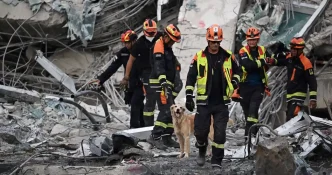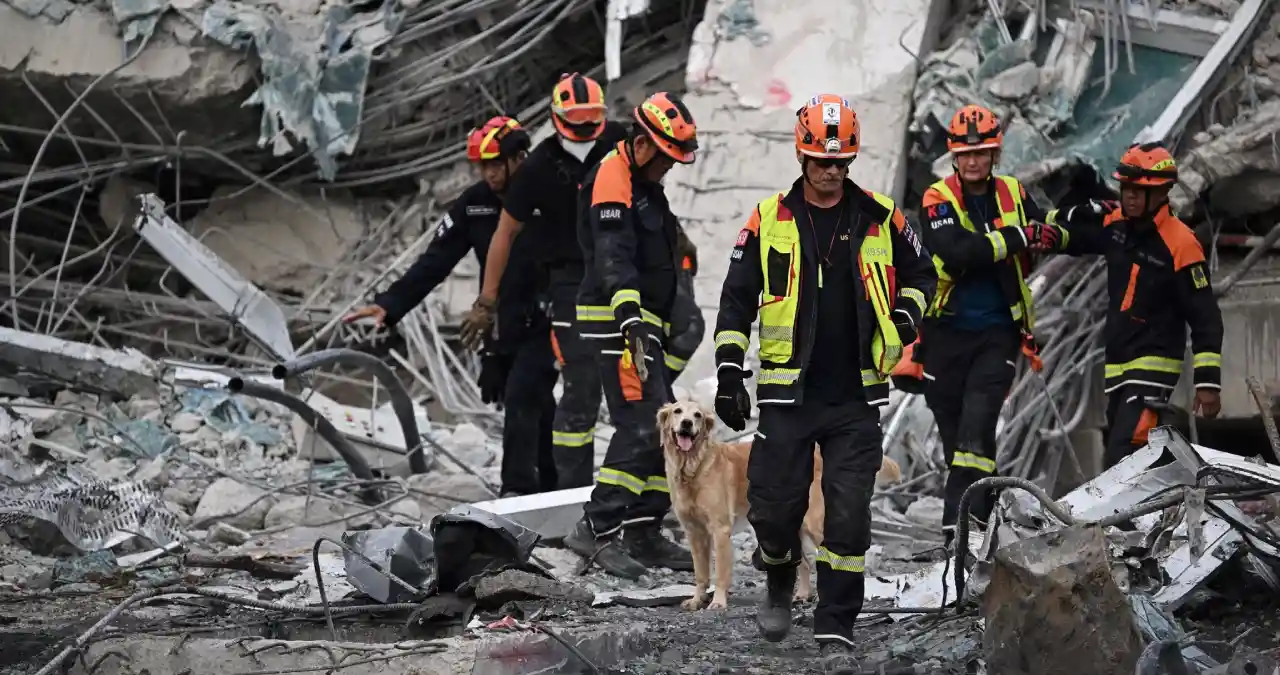Thailand’s Prime Minister Paetongtarn Shinawatra has confirmed that critical design and construction flaws were the primary causes of the catastrophic collapse of the State Audit Office (SAO) building in Bangkok during a recent earthquake on March 28, 2025. The announcement, made following a high-level meeting at Government House, has raised urgent questions about oversight in public infrastructure projects and the potential for accountability in one of the capital’s most significant structural failures in recent years.
Investigation Reveals Systemic Failures
Addressing the press on Monday, Prime Minister Paetongtarn detailed the findings of a comprehensive investigation involving four independent institutions. Their reports unanimously pointed to deficiencies in the building’s design and construction, particularly in the shear wall systems around lift shafts and stairwells, as key contributors to the collapse. Advanced simulation technology, which recreated the building’s response to seismic forces, further corroborated these conclusions, highlighting how the structure failed under stress it should have withstood.
“From the reports received, it’s clear that many aspects of the construction did not comply with legal standards — both in terms of design and execution. Simulations confirmed that had the legal standards been followed, the building would have been more structurally sound and better able to withstand the tremor” said Paetongtarn. She also noted that substandard concrete and faulty construction practices compounded the issues, painting a picture of systemic negligence in the project’s execution.
The Prime Minister was quick to address concerns about whether the materials themselves were defective. While speculation had initially centered on the quality of steel used in the construction, experts ruled out material faults. “The materials themselves were not the issue. But in this particular project, the steel was cut down in size and used in a way that did not comply with regulations — making it effectively illegal” she explained. This revelation shifts the focus from supply chain issues to deliberate or negligent deviations from mandated standards during the building process.
Public Safety and Broader Implications
The collapse of the SAO building, a key government facility, during the March 28 earthquake sent shockwaves through Bangkok, both literally and figuratively. While specific casualty figures and damage costs remain under review pending a final report, the incident has spotlighted vulnerabilities in Thailand’s urban infrastructure, especially in a city prone to occasional seismic activity. Earthquakes, though not as frequent or severe as in neighboring regions like Indonesia, remain a concern for densely populated areas ill-prepared for such events.
Paetongtarn sought to reassure the public that the issue appears isolated. “I was worried at first that poor-quality materials were being used across other projects, but that turned out not to be the case. The problem was confined to this project” she stated. She added that other ongoing public projects have undergone rigorous inspections, with no similar deficiencies detected. This assertion, while comforting, leaves open the question of how such lapses occurred in a high-profile government building in the first place.
The broader implications of this disaster extend beyond immediate safety concerns. Public trust in government oversight of infrastructure projects, already a sensitive issue in Thailand given past controversies over construction scandals, could face further erosion. The SAO, tasked with auditing state finances, is a symbolically significant institution, and its physical collapse may resonate as a metaphor for perceived systemic weaknesses among critics of bureaucratic efficiency.
Accountability and Legal Proceedings
With the investigation’s technical findings now public, attention turns to accountability. Prime Minister Paetongtarn was cautious when pressed on who would bear responsibility for the collapse. “We’ve clearly stated that the root cause was in the design and construction. As for who is at fault, that is for the police and DSI to determine. All relevant information is now available, and legal proceedings will follow” she said. This deferral to the Department of Special Investigation (DSI) and police underscores the complexity of assigning blame in a case likely involving multiple stakeholders, from architects and contractors to regulatory bodies.
A full report, expected within two weeks, will be submitted to the DSI and law enforcement for further action. This timeline suggests a swift move toward potential prosecutions or civil penalties, though the intricacies of Thailand’s legal system, combined with the political sensitivity of the case, may delay conclusive outcomes. If confirmed, allegations of non-compliance with legal standards could lead to significant reforms in how public projects are tendered, monitored, and completed.
Thailand’s legal framework for construction safety, governed by regulations under the Building Control Act, places strict obligations on project stakeholders to adhere to seismic and structural standards. Non-compliance, especially in a government building, could set a precedent for harsher penalties or tighter oversight if public pressure mounts. However, as the investigation remains ongoing, no specific individuals or entities have been named, and adverse inferences would be premature at this stage.
Political and Economic Fallout
The political ramifications of the SAO collapse are already evident. Prime Minister Paetongtarn, who assumed office amid promises of modernizing Thailand’s infrastructure and governance, faces a critical test of her administration’s credibility. Her handling of the crisis—balancing transparency with a firm commitment to accountability—will likely shape public perception of her leadership, particularly in urban centers like Bangkok, where infrastructure resilience is a pressing voter concern.
Economically, the collapse could have ripple effects on Thailand’s construction sector, a key driver of GDP growth. While Paetongtarn emphasized that the issue was project-specific, investor confidence in public-private partnerships for infrastructure development may waver if systemic issues are perceived. The cost of rebuilding the SAO, alongside potential compensation for damages or losses, will also strain public budgets at a time when fiscal priorities are under scrutiny. Though exact figures are unavailable, preliminary estimates suggest repair and legal costs could run into millions of Thai Baht, with conversions to USD to be determined upon final reporting.
Moreover, the incident may prompt a reevaluation of seismic preparedness across Thailand. Bangkok, while not in a high-risk earthquake zone, has faced criticism for lax enforcement of building codes in rapidly urbanizing areas. Calls for updated regulations or mandatory retrofitting of older structures could gain traction, though such measures would require significant funding and political will—both of which are often in short supply during post-crisis recovery phases.
Public Sentiment and Regional Context
Public reaction to the collapse, as gauged from social media platforms like X, reflects a mix of anger and resignation. Many Bangkok residents express frustration over perceived negligence, with some users questioning how a government building could fail so spectacularly. Others, however, commend the Prime Minister’s swift response and commitment to transparency, though skepticism about whether justice will be served remains prevalent.
In a regional context, Thailand’s struggle with infrastructure safety is not unique. Neighboring countries like Indonesia and the Philippines, which face more frequent natural disasters, have grappled with similar issues of substandard construction leading to preventable tragedies. The SAO collapse may serve as a wake-up call for Southeast Asian governments to prioritize resilience in urban planning, especially as climate change and population density exacerbate risks.
International observers, including engineering experts cited by outlets like Reuters, have noted that while Thailand’s seismic activity is relatively low, the incident underscores the universal need for rigorous building standards. Comparative cases, such as the 2019 earthquake-related collapses in Indonesia, highlight how non-compliance with design codes can amplify disaster impacts, a lesson Thailand appears poised to heed.
Looking Ahead
As the investigation into the State Audit Office collapse moves into its legal phase, Thailand stands at a crossroads. Will this disaster catalyze meaningful reform in construction oversight, or will it fade into the background of political discourse as other priorities take precedence? For now, Prime Minister Paetongtarn’s administration has taken a decisive first step by identifying the flaws that led to the tragedy. Yet, the harder task of ensuring accountability and preventing future failures looms large, with the eyes of Bangkok—and the nation—watching closely.















